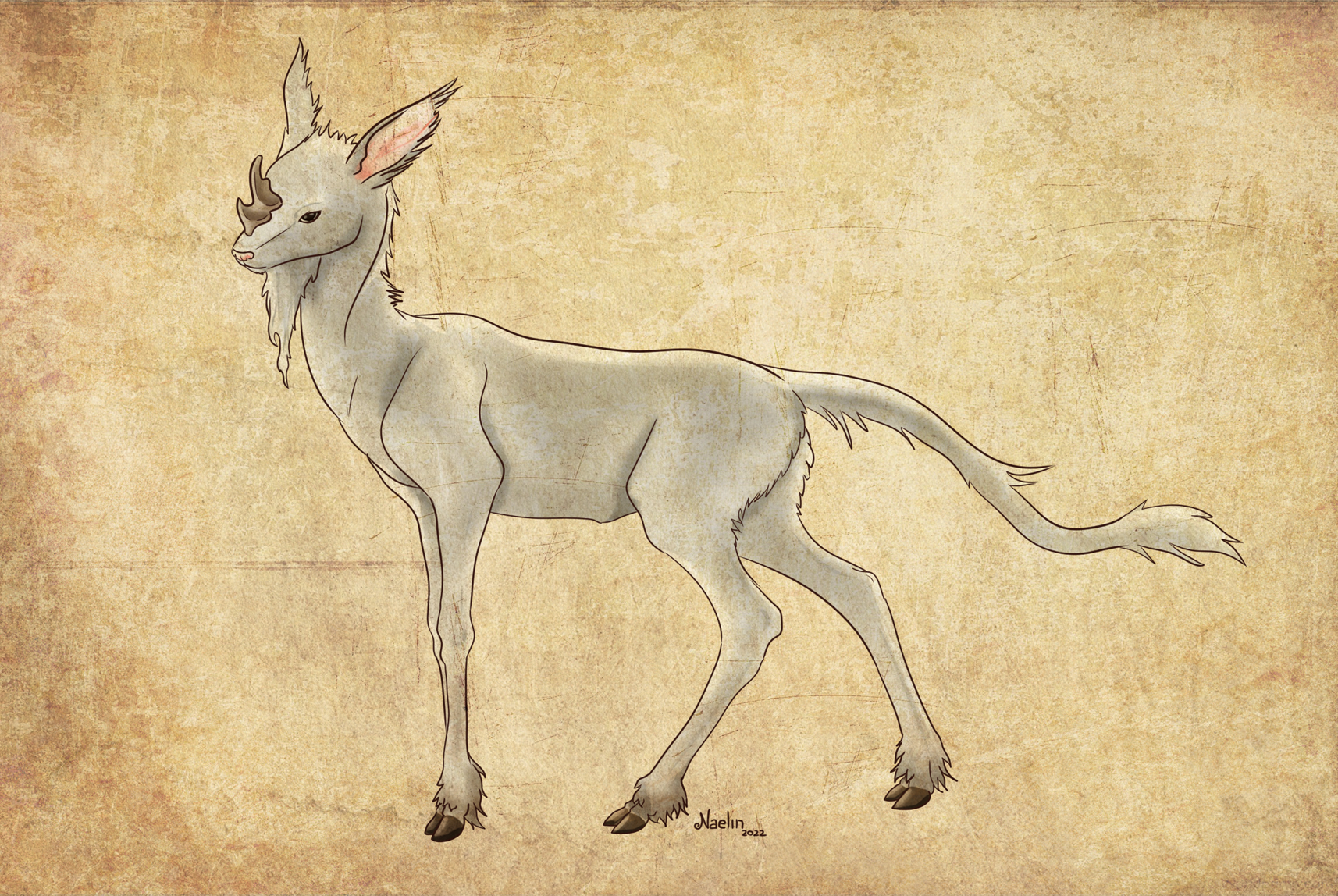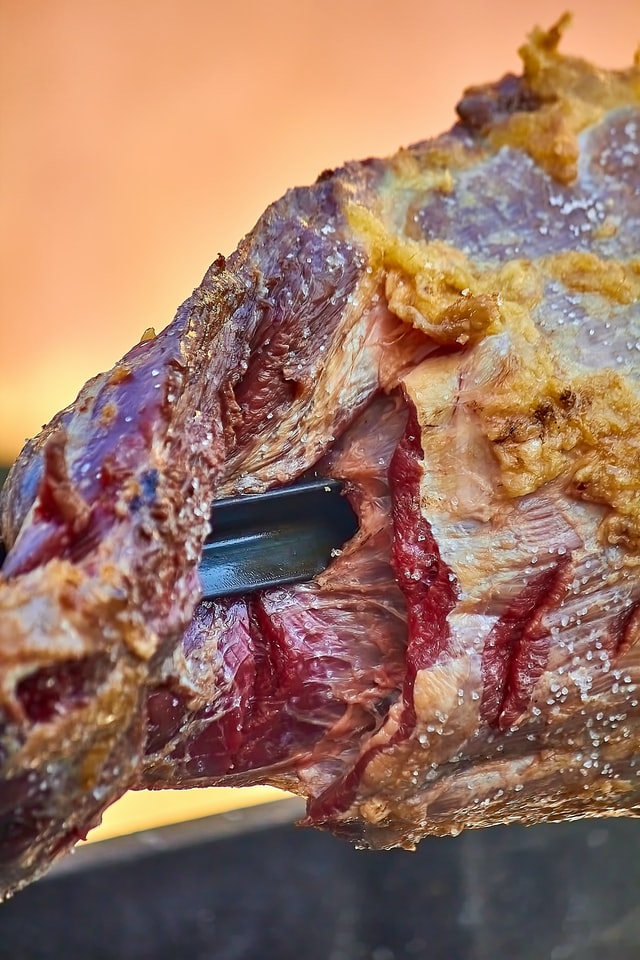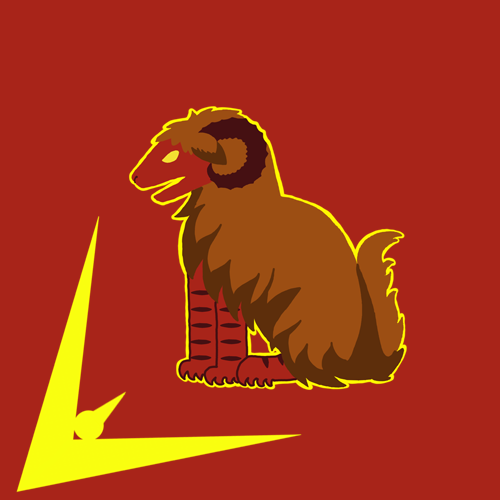Licern

Licern by Welkinal
Biology
Anatomy
Licerns are a medium-sized hooved creatures with a lean appearance.They are quadrupedal mammals covered in soft white fur, which grows long and irregular on the feet, tail and ears, as well as as a long beard under their chin. They have long, thin and fragile legs with two hooves in each foot, and a long tail that might be as long as their body. Both males and females have a horn divided in two curved ends on their face. The front division is smaller, while the bigger one behind it has a nub or second tip halfways from the base to the end.
Intact males usually have slightly bigger horns set further back in the face, closer to the top of the head, while females and males castrated young generally have their horn set closer to the nose. The domestic licern is bigger than the original wild species and usually has a longer tail.
Behaviour
Licerns are a simple, herbivore, variably gregarious creatures that live up to 16 years in captivity.Grouping
In the wild, they might be found in small groups of up to 10 invididuals (typically 4-7) or as solitary individuals. Grouping is more common following mating season and less during fawning, where it is usual for females to separate and for males to form smaller groups of 2 or 3 individuals.In domestic settings, licerns are usually kept in larger groups all year round. Gregarity has been selected for in the domestic licern, making them less likely to run into issues with territorial individuals. They are often kept in the same pens with other types of livestock.
Diet
Licerns eat a big range of plant types, including grasses, tree leaves and bark, forbs, berries, roots and shrubs. Ocassionally, they might gnaw on bones or eat baby birds for additional nutrients.Geographic distribution
Licerns are thought to have originated in the white forest areas of the island of Thaur.Nowadays domestic licerns are kept all around the Haan Archipelago.
The original wild population remains in Thaur, though escaped domestic licerns have managed to form herds in most major islands including Ruh, Dhalmain, Karte and Red Crest.
Domestic Use
Licerns are a common livestock creature around the entire archipelago, kept primarily for their meat and milk, though a lot of other parts of their bodies are also thoroughly used and valued.Husbandry
Licerns are not an easy creature to rear and keep.They are delicate, skittish, require large pens and reproduce slowly compared to other meat livestock. In general, trelis are preferred as read meat sources due to their fertility and ease to be kept and raised.
However, the licern meat is considered delicious and of high quality, and they are one of the best sources of milk.
Products
Licern meat is deep red, lean and flavourful. It is most popular for grilling, though it requires macerating to avoid stiffness: Usually, this is done with a mixture of vinegar, oil and fine herbs for about a day.The ribs are especially coveted, though every part is used.
Their milk is reliable and of very good flavour, usually preferred for cheeses and cooking over the more bland alzufhar milk.
Their skin is widely used as parchment for writing, especially for important documents such as naval charts, law writing and state documentation.
Their hair is sometimes woven into fabrics. These are rare and expensive, though coveted for their fine and breathable fibers that make it ideal for light summer clothing.
Lifespan
6-8 years (wild)
10-16 years (domestic)
10-16 years (domestic)
Average Height
90cm to the shoulders
Geographic Distribution
Cross-roasted licern
Open a skinned, cleaned licern foal by the sternum and prepare two vertical cuts to the sides of the spine to be able to set it on the cross.Thoroughly coat it with a mixture of oil, vinegar and at least 5 varieties of fine herbs.
Let rest overnight in a covered pot in a cool place.
Prepare a cross grill and set the licern with the rear side down ensuring the extremities are well secured. Cook for 2 to 3 hours.






A new creature <3 it feels like it was so long since I read a new one. These are very cute, I love their horns. Since you mention how tasty the meat and milk are, do you have any recipe in store that uses them as their main ingredient?
Great idea, I had something in my head and it didn't come to me to write it down. It's now added :)